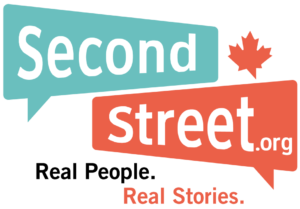SUN NEWS COLUMN: Decades Since Government Employees Took Pay Cuts
Over the past few months we’ve seen countless stories of businesses suffering due to COVID-19 and having no choice but to reduce employee pay or go under.
Reuters reported earlier this year that Chrysler employees would be taking pay reductions of up to 20 per cent. According to Bloomberg, Cineplex reduced pay for their full-time employees by up to 80 per cent and Postmedia has reported on several Canadian Football League teams cutting employee pay as well.
There have also been plenty of stories about news outlets taking pay cuts – for example, the Winnipeg Free Press reduced pay by 12 to 20 per cent for its staff while the paper’s publisher took a 50 per cent cut.
Curiously, though, we hadn’t seen any stories about government employees taking pay cuts.
That led us to ask the federal government, all 10 provincial governments and 13 major city governments – when was the last time you cut employee pay?
While we waited for the results to come in, we spoke with Rayna Oryniak, a worker in Canada’s energy sector in Calgary. She told us she received a pay cut earlier this year and it became next to impossible for her to make her student loan payments. The young professional also had to halt her retirement savings contributions. The stress and anxiety were significant.
While stories like Rayna’s are common outside of government, we soon learned that pay cuts are almost non-existent inside government.
The federal government told SecondStreet.org there is “no data or any information that indicates that there has ever been a negotiated pay reduction” for federal employees.
Must be nice.
The Quebec government told us the last time they cut employee pay was 1982.
New Brunswick’s data goes back to the 1970s … no pay cuts since then.
Saskatchewan’s data goes back to 1998 … no pay cuts there either.
At the municipal level, one might expect Calgary would have some evidence of pay reductions. After all, the city has been through enormous economic pain since 2015 when oil prices plummeted and many businesses downsized or simply went under.
Yet data provided by the City of Calgary dates back to 1974 and it shows no signs of any pay cuts.
Mississauga and Moncton told us they’ve never cut employee pay either.
Overall, we didn’t come across any pay cuts in government since COVID emerged (not counting politicians). Instances of pay cuts that we did find took place decades ago.
The closest example we found to a recent pay cut in government occurred in Manitoba, employees were required to take five days off unpaid.
Conversely, the federal government negotiated a new pay increase for its employees and even let 76,804 of them take several months off work – fully paid.
To be clear, no one should be cheering for government employees to receive a pay cut. They have household budgets like the rest of us.
But it’s hardly fair for governments to continue to take funds from struggling taxpayers and businesses, then use them to protect government employees from feeling the pinch a bit too.
A pay reduction for government employees could help governments avoid tax increases and get their debt under control without having to cut important services or lay off staff.
It’s hard to imagine the alternative – asking taxpayers like Rayna and thousands of other Canadians to pay more.
Colin Craig is the President of SecondStreet.org, a start-up Canadian think tank.
This column was published in the August 31st print addition of Sun Newspapers (Toronto, Ottawa, Winnipeg, Calgary, and Edmonton).
You can help us continue to research and tell stories about this issue by making a donation or sharing this content with your friends. Be sure to sign up for our updates too!


